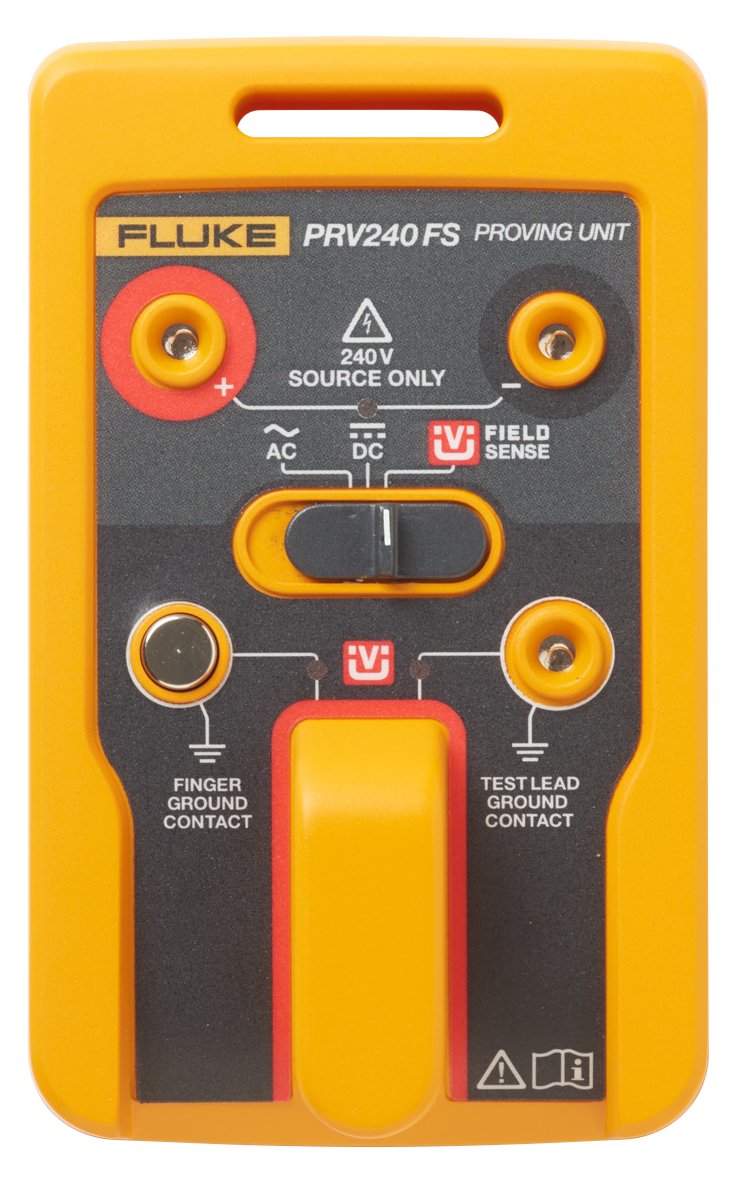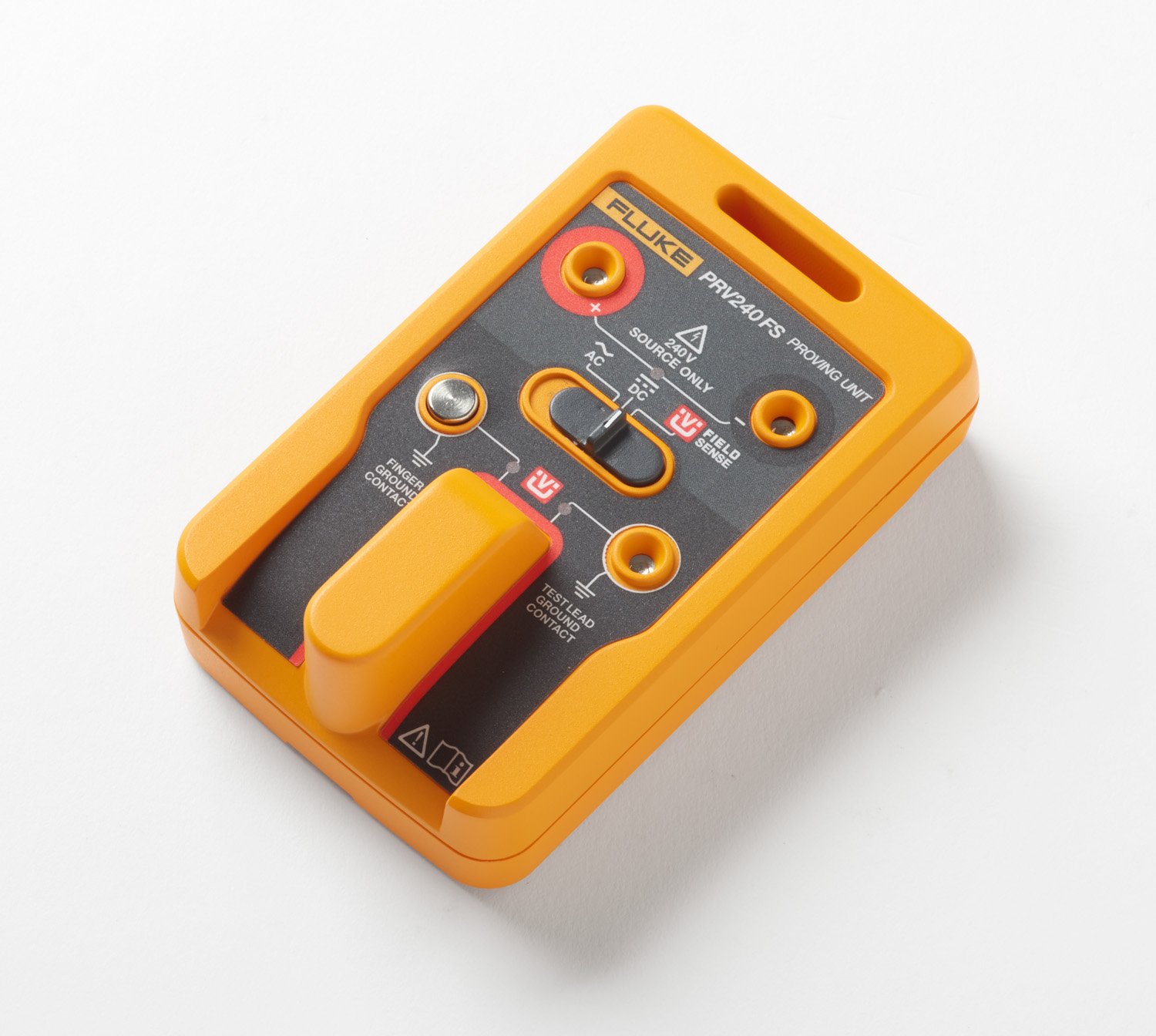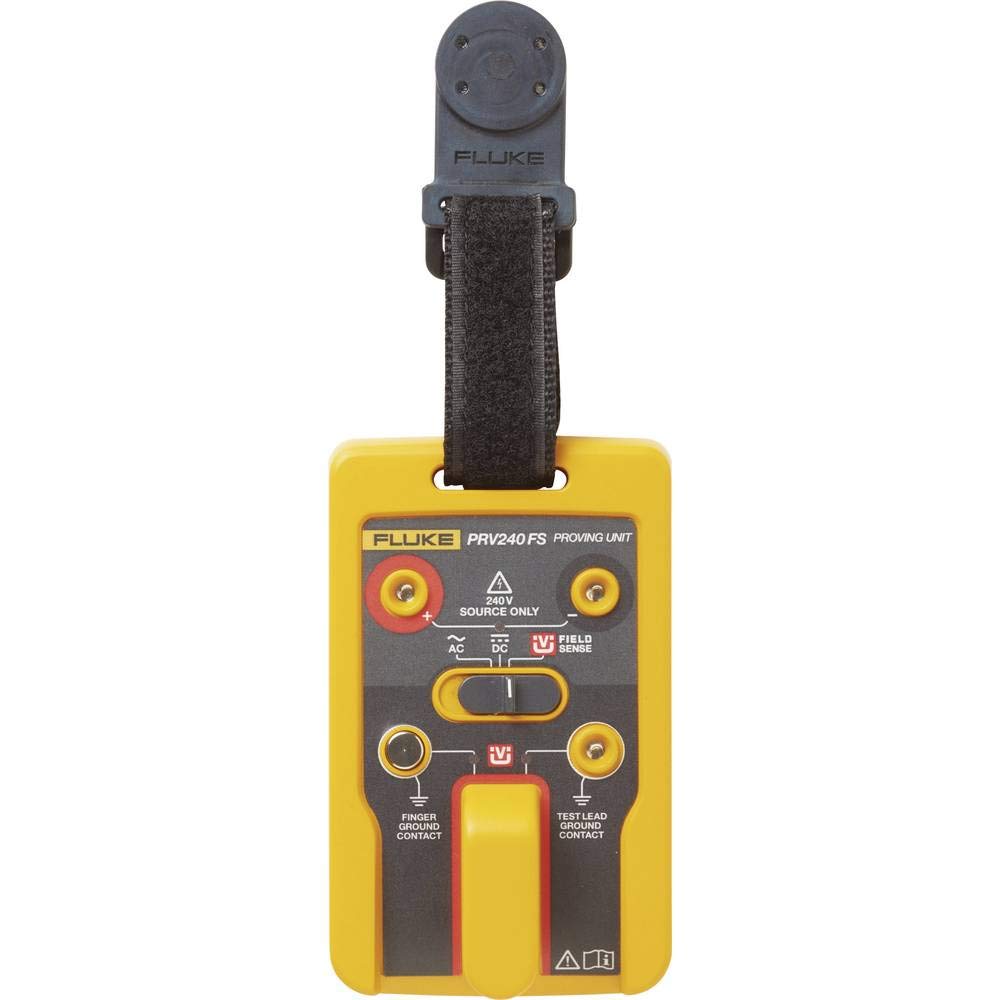The Fluke PRV240FS Proving Unit has been designed to prove the functionality of T6 Electrical Testers and their FieldSense measurement function. It can also be used to test high impedance multimeters and clamp meters. Maintaining the user’s safety and the T6 Electrical Tester with FieldSense and/or high impedance product’s accuracy of measurement are the main purposes of this proving unit. Designed to perform Test Before Touch (TBT) tests, the user can check his/her T6 Tester, high impedance multimeter and/or clamp meter against a known voltage before and after using these tools to conduct electrical tests. This product is extremely useful if a known voltage source is not available and reduces the need for personal protective equipment (PPE). * This simple-to-use proving unit operates via a single switch and uses LEDs to indicate the functionality of the tester’s FieldSense (no-test-lead) voltage measurement and standard AC/DC (with test lead) voltage measurement. It sources its AC and DC voltage through a central hub, intended to test the T6 FieldSense open fork, and recessed contacts which are activated when test probes are inserted, providing a steady-state AC/DC voltage supply of up to 240 V. The Fluke PRV240FS Proving Unit is extremely practical; it includes a TPAK magnetic hanging strap and four AA batteries capable of withstanding 2000 tests before needing to be replaced. This product is a simple, practical solution to complying with TBT verification, reducing the user’s risk of exposure to shock and arc flash.
Fluke PRV240FS Proving Unit
¥55,485
- Reduce your risk of shock and arc flash by validating the functionality of test tools without placing yourself in a potentially hazardous electrical environment
- Prove functionality of the Field Sense measurement on the T6 electrical testers
- Source both ac and dc steady-state voltage (supplies 240 V DC/AC)
- Compatible with high impedance multimeters or clamp meters
- Voltage is sourced through a central hub designed to test the T6 Field Sense open fork, as well as through recessed contacts that are activated when test probes are inserted to avoid accidental contact
In stock



